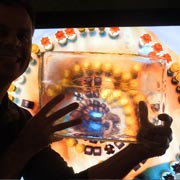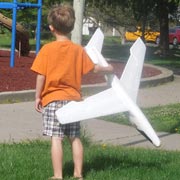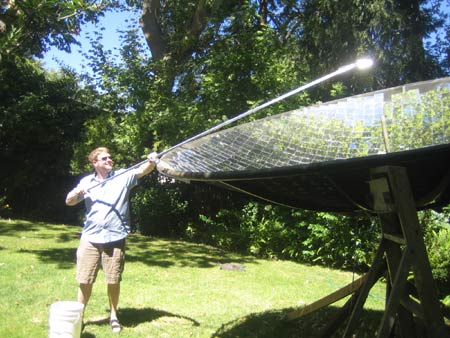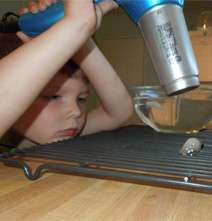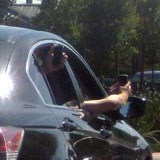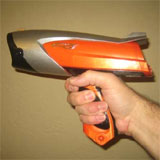The Secret Advantage of Coors Light Beer Cans
A few years ago, I built a solar death ray. Well, that term was the brainchild of Louis Giersch. I named my dish the "Light Sharpener". In any case, I built a 12' mirrored dish, which I could use to focus the sun's rays into a concentrated point of light. This focal point was the spot where 700 rays of sunlight crossed paths and could be aimed at a target. Usually that target burst into flames.
One of the best lessons of the experience was that black objects melted, but white objects reflected the light, allowing them to resist melting for a much longer period. Mirrored and silvered objects also resisted the assault.
Regardless of the material, the color of the target was critical.
It wasn't until many years later that my friend Scott suggested the beer can test below. Scott had a hypothesis that this silver beer can would be well protected against rays of sunlight. Was it possible that this critical property of beer can marketing had been overlooked?
With a history of rolling out "Cold Activated" cans, double air vents, and a "frost-brewed liner", Coors Light is the standard bearer for beer can gimmicks. If I could show their beer cans were uniquely suited for outdoor drinking, I would be the hero of their marketing department! I'd be embraced as a beer-can physics wizard!
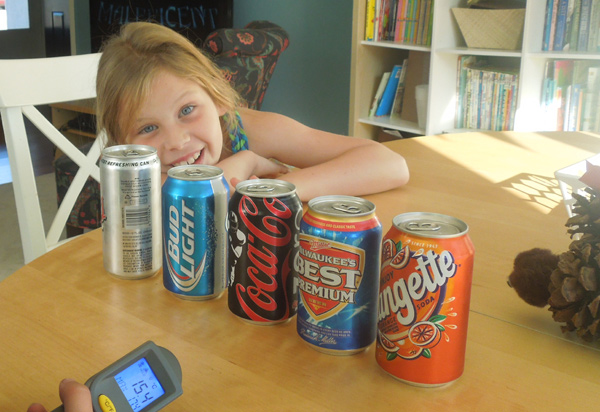
I don't have the solar dish anymore, but with the sun shining I had everything I needed to test the heat-resistant properties of the silver bullet can. On Saturday morning we lined up five cans, fresh from the refrigerator.
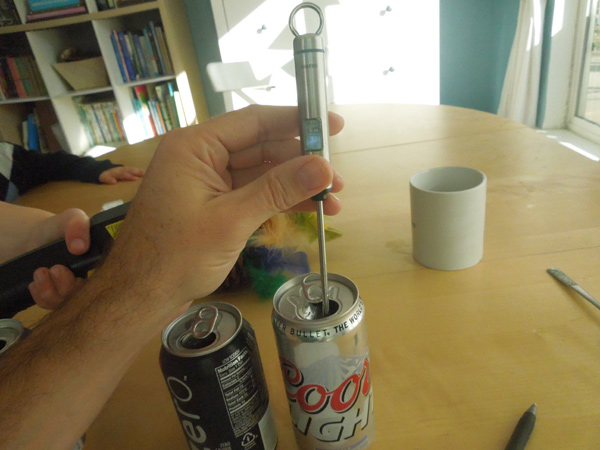
All of the cans had been cooling for more that 12 hours, so I expected them to be the same temperature.

They weren't the same temperature. The orange drink, Coke Zero, Bud Light and Milwalkee's Best Premium were at 43° and 44°F, but for some reason, the Coors Light can had only cooled down to 46.8°F.

With our start temperature recorded, we brought the cans outside and set them on a table in the direct sunlight.

They warmed in the sun.
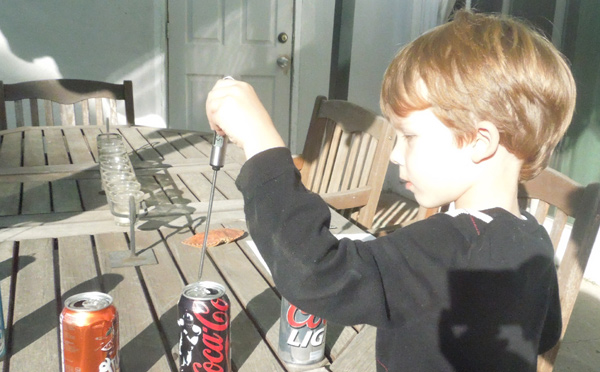
Twenty-one minutes later, we checked the temperature of their contents.

In 21 minutes, they had all warmed about 10°F.

The blue Bud Light can finished coldest, but it had started the test as the coldest. On the other hand, Coors Light had ended with a fairly high temperature, but it had started a few degrees warmer than the others.
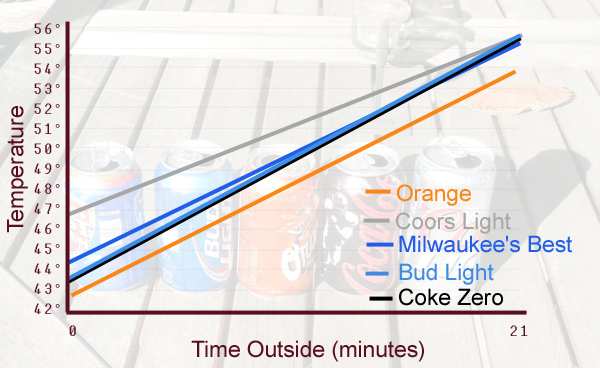
In the chart above, you can see that the top line, illustrating the heat rise of the Coors Light, has the flattest curve. It did seem to resist a change in temperature slightly better than the other cans (a 9.8° rise compared to a 12.2° rise by the black Coke can.
After the calculations, I was faced with more questions. Why was the Coors Light warmest when the experiment began? Had the hot tabletop allowed an unexpectedly large amount of heat conduction through the bottom of the cans?
I decided to try one more experiment.
Please Continue Reading Page 2 >
Cockeyed home page | Contact | Terms and Conditions | Updated November 22, 2013 Copyright 2013 Cockeyed.com






